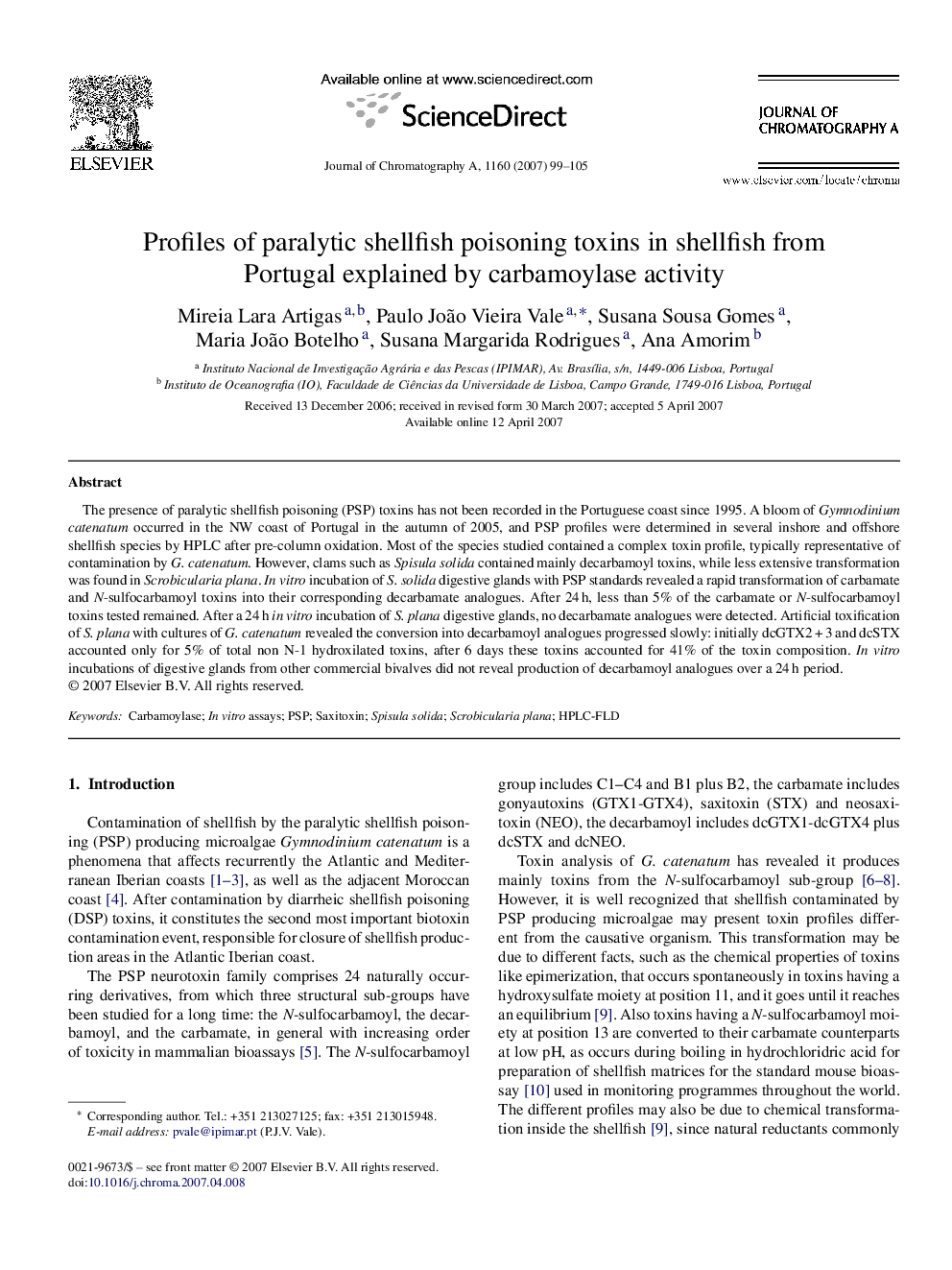| کد مقاله | کد نشریه | سال انتشار | مقاله انگلیسی | نسخه تمام متن |
|---|---|---|---|---|
| 1206863 | 1493743 | 2007 | 7 صفحه PDF | دانلود رایگان |

The presence of paralytic shellfish poisoning (PSP) toxins has not been recorded in the Portuguese coast since 1995. A bloom of Gymnodinium catenatum occurred in the NW coast of Portugal in the autumn of 2005, and PSP profiles were determined in several inshore and offshore shellfish species by HPLC after pre-column oxidation. Most of the species studied contained a complex toxin profile, typically representative of contamination by G. catenatum. However, clams such as Spisula solida contained mainly decarbamoyl toxins, while less extensive transformation was found in Scrobicularia plana. In vitro incubation of S. solida digestive glands with PSP standards revealed a rapid transformation of carbamate and N-sulfocarbamoyl toxins into their corresponding decarbamate analogues. After 24 h, less than 5% of the carbamate or N-sulfocarbamoyl toxins tested remained. After a 24 h in vitro incubation of S. plana digestive glands, no decarbamate analogues were detected. Artificial toxification of S. plana with cultures of G. catenatum revealed the conversion into decarbamoyl analogues progressed slowly: initially dcGTX2 + 3 and dcSTX accounted only for 5% of total non N-1 hydroxilated toxins, after 6 days these toxins accounted for 41% of the toxin composition. In vitro incubations of digestive glands from other commercial bivalves did not reveal production of decarbamoyl analogues over a 24 h period.
Journal: Journal of Chromatography A - Volume 1160, Issues 1–2, 10 August 2007, Pages 99–105